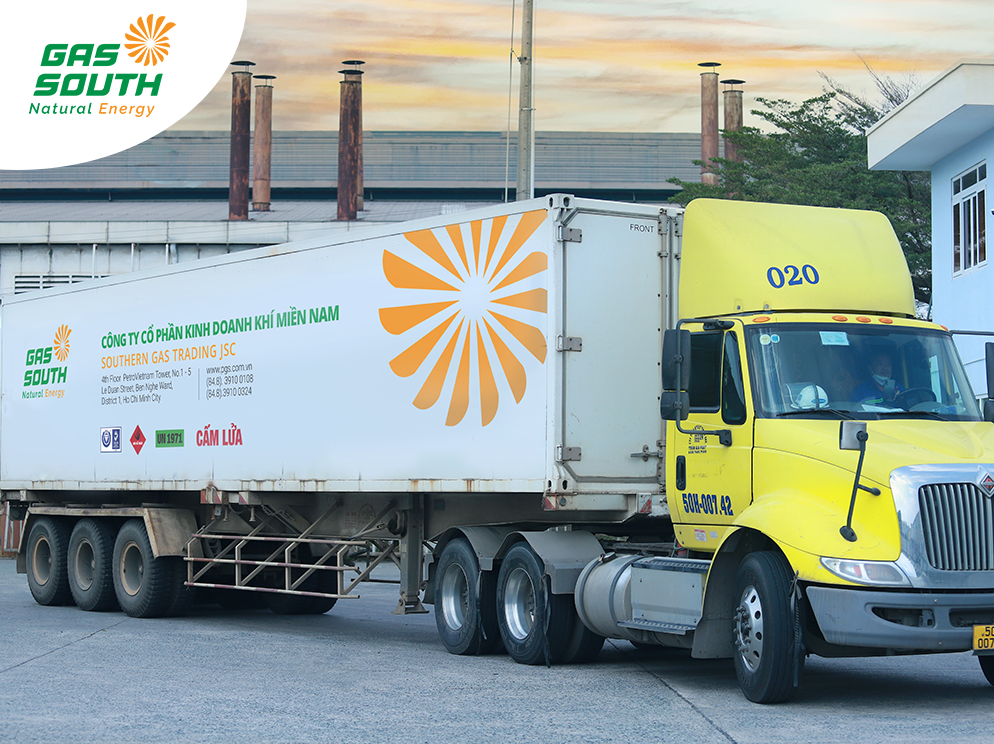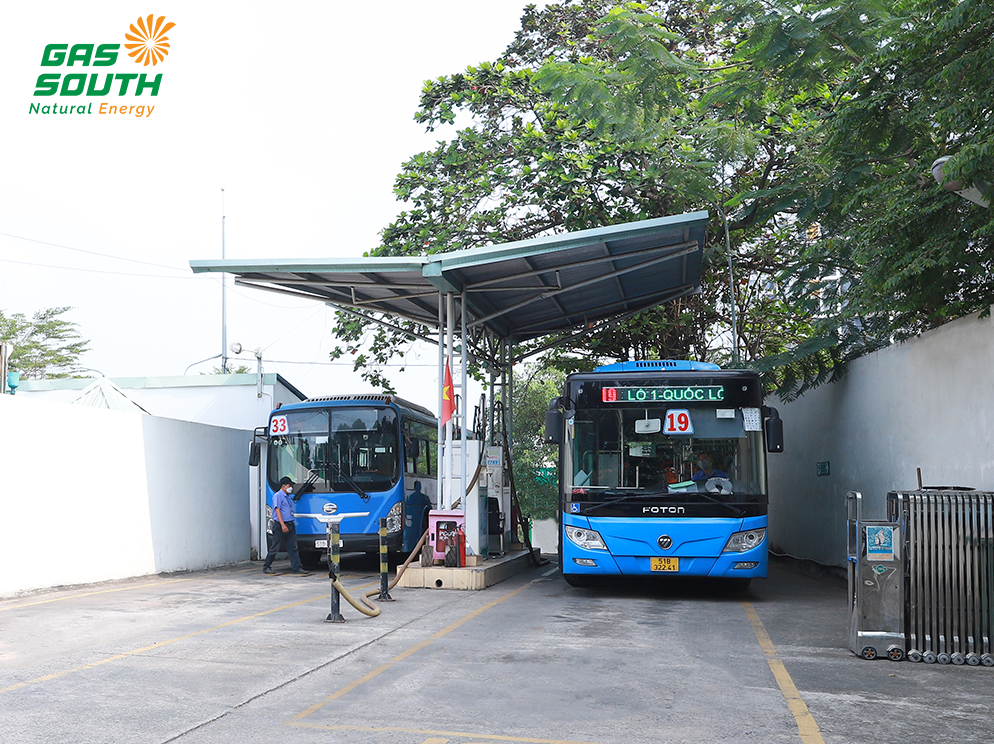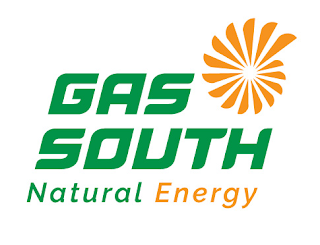What is Compressed Natural Gas (CNG)? Prices and how CNG product?
CNG is one of the cleanest fuels available today and is frequently utilized in our everyday life. What exactly is compressed natural gas (CNG), what qualities does it possess, and how is it used in modern society? What distinguishes between LNG and CNG when it comes to compressed natural gas? Let's learn more about these subjects with Gas South in the article that follows!
1. What is Compressed Natural Gas (CNG)?
1.1 Definition of Compressed Natural Gas (CNG)
CNG (Compressed Natural Gas) is a compressed natural gas that's composed mostly of methane - CH4 (85-95%). CNG is derived from natural gas sources or related gas in oil fields. To facilitate the process of transferring CNG to its place of consumption, the gas is often compressed under high pressure (between 200 and 250 bar) in specialized tanks.

Gas South - Compressed Natural Gas manufacturer in Vietnam
1.2 The Distinctive Attributes of CNG
CNG mostly comprises 87% methane, 10% ethane, 2% propane, and 1% other gasses. As a result, natural compressed air CNG is colorless, odorless, and non-toxic, and it is light and easily soluble in air. Sulfur is frequently added to CNG during storage and transit to aid in the detection of leaks. CNG can achieve temperatures of around 1949 degrees Celsius when burnt at high temperatures and emits far fewer pollutants than gasoline and diesel.
In addition to the basic qualities listed above, CNG acquires the following prominent characteristics:
Reducing greenhouse gas emissions: studies conducted across the world indicate that the CNG combustion process emits far fewer pollutants than diesel and petroleum-based engines and practically never produces fine dust.
Superior efficiency: CNG undergoes compression at 200-250 bar pressure, saving considerable transportation and storage expenses.
Economical: Using CNG saves 10% to 30% of the cost of other petroleum-based fuels. CNG prices are also more steady and less volatile in the long run.
Safety: Compared to gasoline, CNG will be safer in an accident since it has the property of being lighter than air.
Extending machine lifespan: CNG burns entirely and does not build deposits, which allows the combustion chamber and carburetor of the devices to last longer.
Potential clean fuel: Compressed natural gas is becoming increasingly popular as a clean fuel. On a worldwide scale, CNG is becoming more and more well-liked. CNG has a lot of reserves because it was developed later than petroleum and will last the human race for roughly 1000 years. In the upcoming years, CNG will compete with diesel and gasoline as an alternative fuel.
1.3 How is the Natural Gas Compression produced?
When consumed at regular atmospheric pressure, methane is compressed to less than 1% mass in CNG. To make CNG easier to store and transport after compression, it will be kept in containers at a pressure of 20 to 25 Mpa. To maximize storage effectiveness, compressed natural gas tanks are often spherical or cylindrical. The following figure can approximate the actual process of creating and delivering compressed natural gas (CNG):
Gas source input → compression → transportation → depressurization at the customer station (PRU) → Connection to the furnace of consumers.
1.4 Compressed Natural Gas prices.
Compressed natural gas is now offered in the Vietnamese market at a cost that is 10% to 30% less than that of gasoline. In comparison to other petroleum-based fuels, CNG costs are more stable over the long term and less erratic. To get the most up-to-date and accurate CNG quote at the moment, call Gas South right away. The price of CNG varies continuously depending on the market.
2. Production, Distribution and Use of CNG
2.1. Gas extraction and treatment
Natural gas is extracted from natural gas or associated gas fields during the exploitation of oil fields, then transported by pipeline to shore and to gas processing plants, where natural gas undergoes processing stages to ensure quality standards.
2.2. Air under compression
Natural gas is delivered from the gas metering equipment to the air compressor after treatment. A 6-inch-diameter pipeline system with a pressure of 16–22 bar transports natural gas into the CNG plant from the low-pressure gas system. The input gas measurement station regulates the airflow. The measuring system is built to automatically update the temperature, pressure, and composition of the gas and show the results immediately. It is also intended to send data to the center (GDC) for the calculation of the supplied gas.
2.3. CNG fueling
CNG will be compressed before being placed into specialized tank trucks with a volume of 20 feet, 40 feet of composite tanks, and 40 feet of steel tanks.
2.4. CNG shipping
CNG is delivered to clients' consumption stations after being compressed into specialized tank trucks made of composite materials or steel and having a volume of 20 feet to 40 feet. Regulations and safety requirements for CNG storage and transportation must be met by tanks and modes of transportation.
2.5. Connecting to and Utilizing CNG at the Customer Station
The pressure of the CNG is reduced by the PRU (Pressure Reducing Unit) pressure reducing system in two stages (stage 1 reduces pressure to 60 bar, stage 2 reduces pressure to 2-7 barg) to supply gas to customers as needed. The tank truck transports CNG to the customer station or the place of consumption. From here, the CNG is led from the tank truck at a pressure of 200–250 barg.
PRU system is created and put in place in accordance with worldwide standards as well as Vietnamese laws and regulations, guaranteeing complete safety. The gas is routed to the next customer's incinerator system from the pressure lowering station's output through the metering system.
3. Application of Compressed Natural Gas (CNG) in Vietnam and Globally
Compressed natural gas, commonly referred to as CNG, is a clean fuel with a wide range of uses. Alongside conventional fuels like gasoline and diesel, numerous conventional vehicles have been engineered to operate using CNG fuel. In comparison to conventional fuels, CNG (compressed natural gas) helps to lower up to 30% NOx, 20% CO2, and 70% SOx on average with the same fuel level.
In addition to lowering hazardous pollutants, CNG (compressed natural gas) also offers up to 40% fuel cost savings over diesel and gasoline. The global CNG car market is presently experiencing steady expansion, registering an annual growth rate of approximately 30% on average. According to statistics, more than 14.8 million automobiles worldwide have transitioned to operate on compressed natural gas (CNG) since 2011, with more than 5 million of those cars being in Asia.

Vietnam CNG compressed natural gas fueling station
In Vung Tau's Phu My 1 Industrial Park, Vietnam, a CNG (compressed natural gas) facility was established in August 2008. Since that time, natural gas compression has progressively become a popular fuel in a variety of sectors, including ceramics, metallurgy, brickmaking, food, chemicals, and others. The light industries, including the textile, dyeing, and industrial In order to successfully save fuel during production, the artificial leather sector also makes use of compressed natural gas. Currently, many automobiles and buses in Ho Chi Minh City have totally shifted to running on compressed natural gas (CNG), which substantially reduces fuel expenses.

Buses using compressed natural gas (CNG) in Ho Chi Minh City
4. Distinguish Between Compressed Natural Gas (CNG) and Liquefied Natural Gas (LNG)
Compressed Natural Gas (CNG) and Liquefied Natural Gas (LNG) are two distinct forms of natural gas. CNG involves compressing natural gas at high pressures, usually between 200 and 250 bar, for the purpose of simplified utilization and transportation. On the other hand, LNG, or liquefied natural gas, is the result of cooling natural gas to extremely low temperatures, approximately -162oC, causing it to become a liquid. Notably, LNG boasts a 2.4 times greater capacity than CNG for tanks of the same dimensions.
Methane, which is the primary component of natural gas and is light and easily soluble in air, makes up both LNG and CNG in terms of composition. They are all less polluted than gasoline, odorless, colorless, and non-toxic. Natural gas from CNG can burn at a temperature of around 1954 degrees Celsius, whereas LNG can burn at a temperature of roughly 1880oC.
Even though LNG has a higher capacity and density than CNG, it is rarely employed in underdeveloped nations since doing so needs expensive infrastructure and technology. Currently, LNG is used more frequently in industrialized nations like the US, Japan, Europe, etc.,In contrast, CNG is extensively employed in numerous regions across the globe.
5. An introduction Southern Gas Trading Joint Stock Company (Gas South) - the Leading CNG Supplier
Gas South - Southern gas trading joint stock company is the unit with the authority to do business and distribute throughout the provinces of Nghe An to Ca Mau. Gas South, which has been in business for more than 23 years under the guiding principle of "Safety, Quality, and Efficiency," has developed into one of the top providers of CNG natural gas in Vietnam.

Gas South - The leading supplier of CNG in Vietnam
Customers will have access to clean CNG at Gas South, which helps companies cut down on fuel expenses and extends the life of equipment. In addition, CNG gas is non-toxic, has no negative effects on worker health, and produces less pollution than other fuels like old oil and gasoline.
Gas South guarantees a consistent fuel supply at the best price to reduce fuel expenditures for companies. Gas South has a wealth of experience and state-of-the-art facilities. Customers may get in touch with Gas South through the following channels to learn more and purchase CNG natural gas at the cheapest price. Gas South welcomes their confidence and collaboration.
Business name: Công ty cổ phần kinh doanh khí miền Nam
English name: Southern Gas Trading Joint Stock Company
Head office: 4th Floor, PetroVietnam Tower, 1-5 Le Duan, District 1, Ho Chi Minh City
Phone: 028.3910 0108 - 025.3910 0324
Email: lienhe@pgs.com.vn
You just learned what compressed natural gas (CNG) is, as well as some of its features and everyday uses. You should now have a better understanding of this clean and extremely ecologically friendly gasoline thanks to Gas South's sharing in the post. Please get in touch with Gas South right now for free assistance if you require more detailed information on CNG natural gas.
#pgs, #cng, #natural_gas_compression, #gas_south, #compressed_natural_gas, #product_cng

Nhận xét
Đăng nhận xét